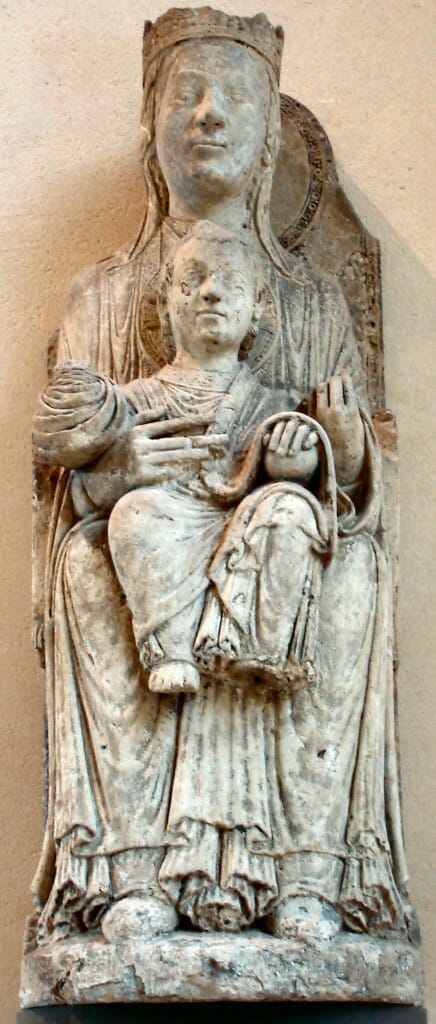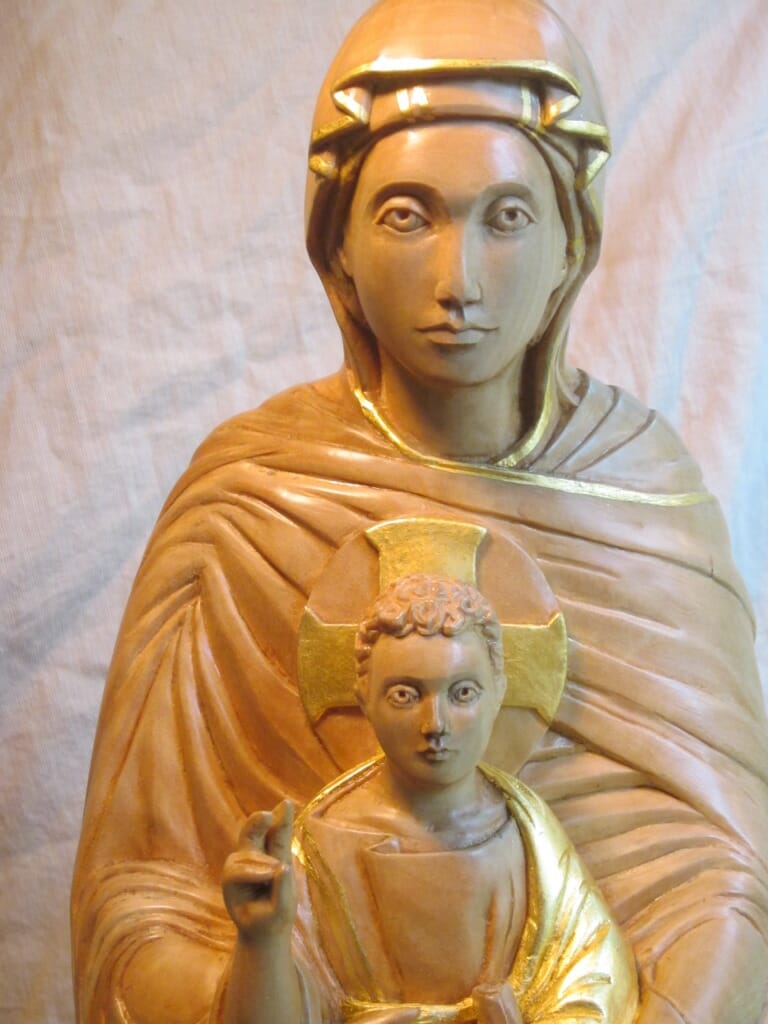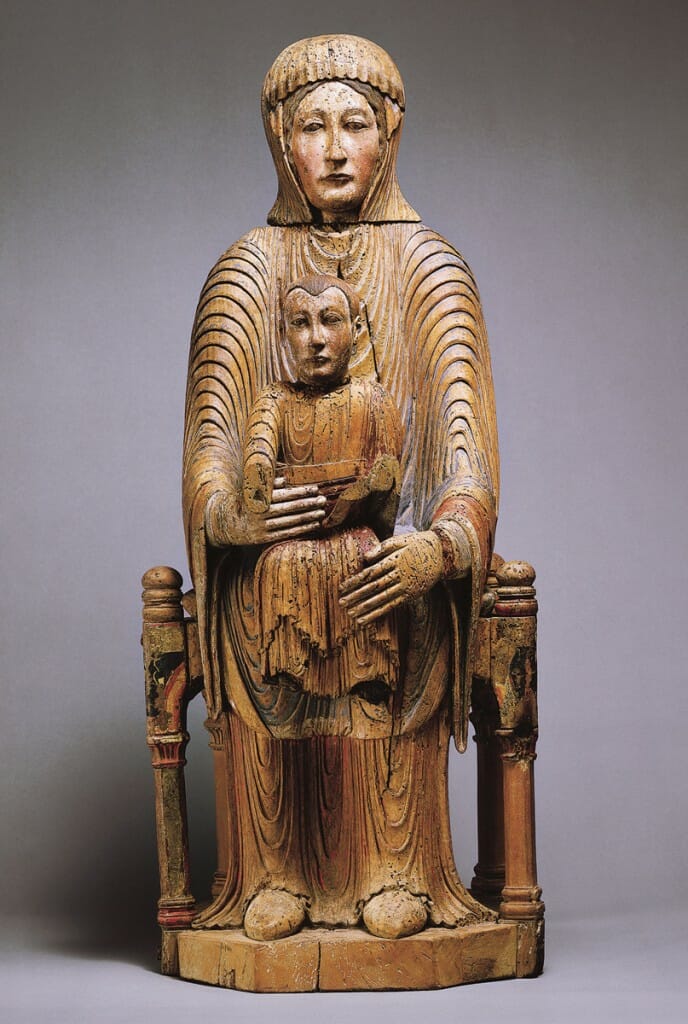Similar Posts
A few months ago, Aidan Hart wrote a wonderful article on the possibility of statuary acting as icon. He did this in the context of having sculpted a model for a stone version of the Seat of Wisdom. Just as he was posting his article, I was also receiving a commission for a wooden carving of this same type. Following in Aidan’s footsteps I attempted to make my version of the image with an iconographer’s eye, joining the Western type and its characteristics with Eastern Orthodox typology.
There is a great variety in Medieval images of the throne of wisdom, and having taken cues from different aspects, my version comes out quite different from how Aidan approached it.

12th century version of the Seat of Wisdom from the Louvre in Paris with a softer more naturalistic appearence
The Seat of Wisdom comes out of some of the earliest images of Christian art, where Christ is presented as sitting of the lap of the Theotokos, who is sitting on a throne. An icon of this subject is one of the the very early encaustic icons we have from the 6th century at St-Catherine’s monastery in Egypt, and the subject continues to appear in iconography until today. I have always found great meaning in this image. Christ sits on the Theotokos both as a king would sit on a throne and how a child might sit on his mother.
When both figures are more hieratic, straight and facing forward, it is wonderful to notice how the Theotokos completely surrounds the Emmanuel. She is like the “mercy seat” of the Ark of the Covenant, the seat and support of the glory of God. With Christ’s halo appearing over her heart as her center, once again we can connect Christ to the glory of God appearing between the cherubim. Other icons like the icon of the Theotokos of the Sign and the Panagia appearing in the apse often show similar characteristics and this same meaning. In the Seat of Wisdom we have a very powerful image of the Church where the head of the church, Christ as the principle of the Church, appears as its heart. It is therefore also linked to how the heart functions in hesychast anthropology. Finally in seeing the image of the seat of Wisdom, we obviously also encounter Christ and the Theotokos in a form that shows most clearly the ontological relationship between them.








One could ask why the Word of God delayed His descent to the earth and His incarnation to save fallen humanity – St Dimitri of Rostov (St. Demetrius)
(Lossky, Mystical Theology, p. 140)